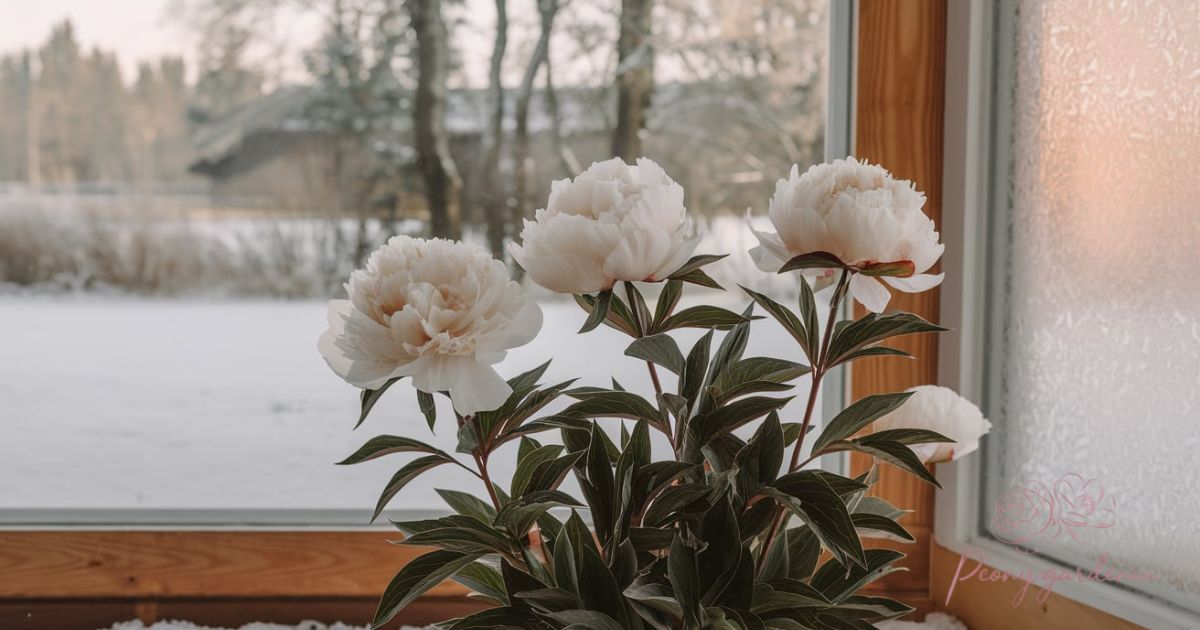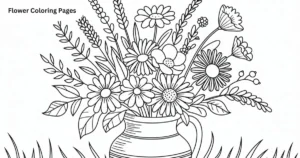Peonies are known for their stunning blooms and fragrant flowers, but their beauty doesn’t end with the arrival of winter. During the colder months, these hardy plants enter a dormant phase, where their growth halts, and they retreat into the ground to conserve energy.
Winter care for peonies is crucial, as the cold temperatures can pose a threat to their roots and crown. While these plants are resilient, they still require protection from extreme cold, strong winds, and excessive moisture. With the right preparation and attention, peonies will successfully weather the winter months and thrive when the growing season begins.
Winter Dormancy: The Essential Rest Period

Winter dormancy is an essential part of a peony’s life cycle. Without this rest, the plant wouldn’t be able to produce the beautiful blooms it is known for in the spring and summer. Dormancy allows the peony to store energy in its root system, where it can draw on this energy when the growing season returns.
Even though the peony appears lifeless above ground, it is quietly preparing for the next growing season. The roots, which are the most crucial part of the plant’s survival, are protected from extreme temperatures. Snow and mulch are essential in keeping the soil temperature regulated and preventing freeze damage.
Read More: How to Divide Peonies: A Complete Guide
Protecting Peonies in Winter
To ensure that peonies survive the harsh winter months, gardeners need to take certain precautions. Mulching is one of the most effective methods of protecting peony roots during winter. A thick layer of mulch around the base of the plant insulates the roots, preventing them from freezing in extreme cold.
Another effective way to protect peonies in winter is to provide wind protection. Strong winds can cause the soil to dry out, and desiccation can lead to root damage. Planting peonies in a sheltered area or erecting barriers to block the wind will help protect them. Additionally, it’s important to avoid overwatering the plant during winter, as waterlogged soil can freeze and damage the roots.
Peonies and Freezing Temperatures: A Delicate Balance
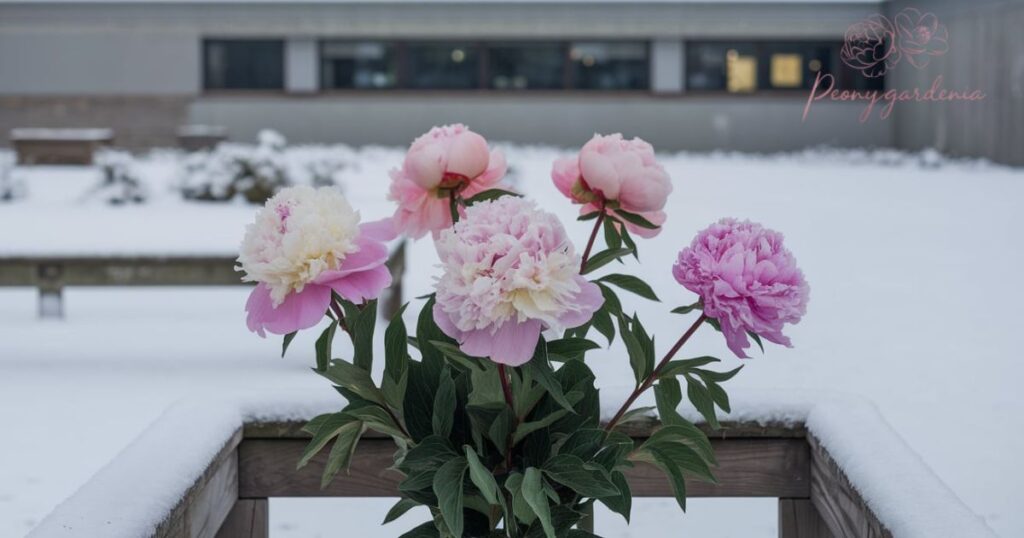
Peonies are hardy plants, but they still require care when temperatures dip below freezing. While the roots are protected beneath the soil, freezing air temperatures can harm the crown of the plant, which is the area where the stems and roots meet.
Though peonies are relatively cold-hardy, they may suffer damage from prolonged exposure to freezing temperatures. In some cases, extreme cold can cause the buds to freeze before they bloom. However, this is a rare occurrence, as peonies typically begin their growth in spring, well after the frost danger has passed.
Signs of Damage: How to Identify Winter Stress in Peonies
It’s important to monitor peonies after the winter season to check for any signs of damage. One of the most common indicators of winter stress is the failure to sprout new growth in the spring. If the plant appears lifeless and there are no signs of buds or shoots emerging, it may be a sign that the roots or crown suffered damage from the winter cold.
Another sign of winter stress is brown or blackened stems and leaves. While the leaves naturally wither and die in winter, any remaining stems should be checked for signs of rot or decay. If the stems are mushy or discolored, it could indicate that they were exposed to excessive moisture or cold damage.
How Peonies Prepare for Spring: Signs of New Growth
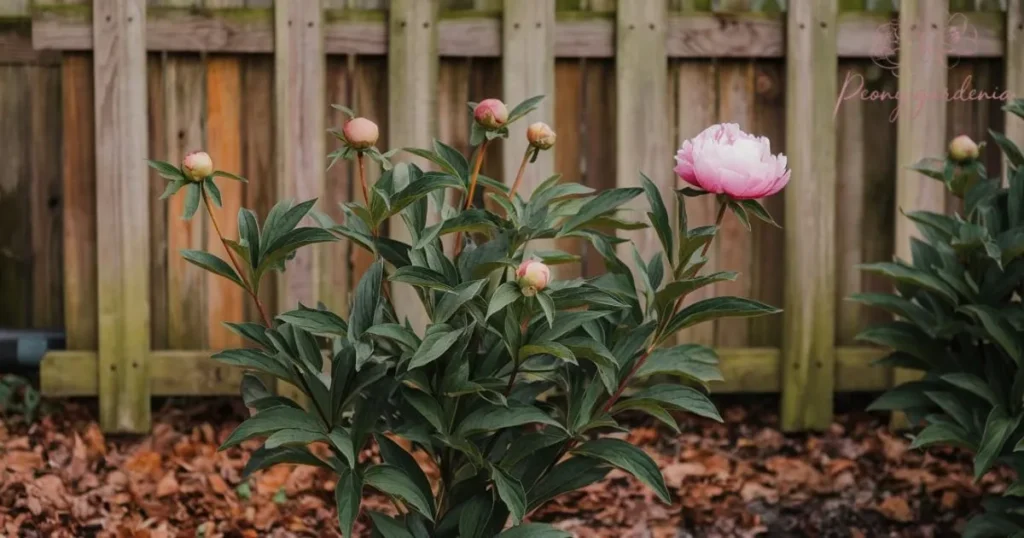
As winter comes to an end, peonies will begin to prepare for the return of warmer temperatures. New shoots will start to appear from the ground as the plant awakens from its dormant state. The first signs of growth are usually small, green shoots that slowly emerge from the soil, marking the beginning of a new season.
Peonies require a period of time to fully revive after the winter dormancy. The roots will begin to absorb nutrients from the soil, and the plant will grow steadily throughout the spring. However, it’s important to avoid disturbing the plant during this growth phase, as it needs to establish a strong root system to support its blooming season.
Caring for Peonies in Early Spring: Preparation for Blooms
Once the peony begins to show signs of life in early spring, it’s time for gardeners to resume care. At this point, it’s important to remove any dead foliage from the previous year to help the plant focus its energy on new growth. This will also improve airflow around the plant, preventing diseases from taking hold.
Springtime is also the perfect opportunity to inspect the peony’s roots for any signs of disease or rot. If the roots look healthy and the plant is growing strong, there’s no need for additional intervention. However, if there are any signs of damage or disease, it’s best to remove the affected parts to give the plant the best chance for recovery. By the time the weather warms, peonies will begin to produce their stunning flowers, a reward for the gardener’s efforts during winter.
The Beauty of Winter: How Peonies Add to the Landscape
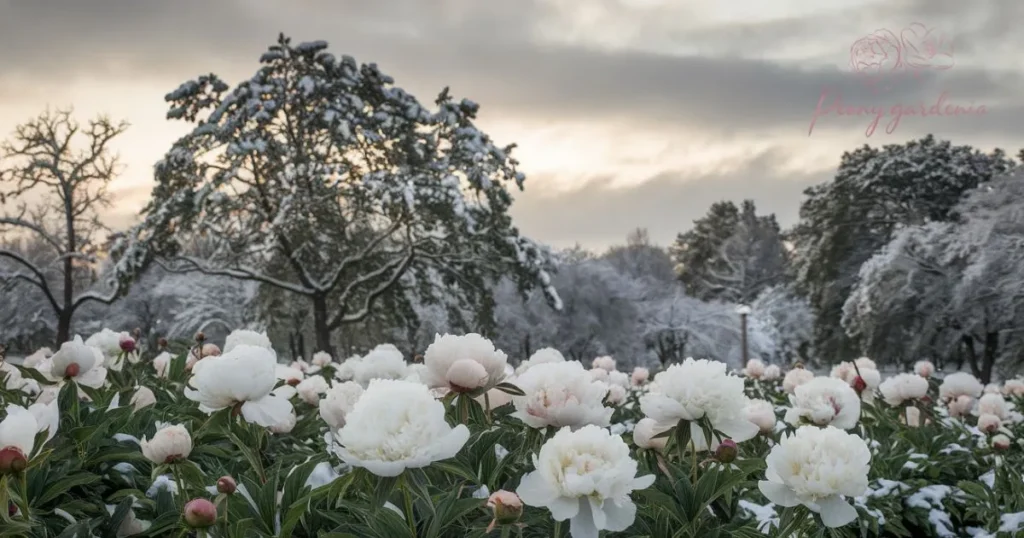
While peonies are known for their vibrant blooms in the warmer months, they can also add beauty to the winter landscape. Even though their flowers aren’t visible during the winter, the structure of the plant still provides visual interest. The dried seed heads and foliage can provide texture and contrast against the bare landscape, and snow can often create a picturesque scene when it settles on the plant.
Additionally, the sight of peonies emerging from the soil in early spring is a reminder of the cyclical nature of life and growth. The transition from dormancy to full bloom offers a sense of renewal, marking the end of winter and the start of a new gardening season.
Conclusion
In conclusion, peonies are hardy plants that rely on winter dormancy to rejuvenate and prepare for the next blooming season. By understanding their natural cycle and providing the proper care, such as mulching and protecting the roots from extreme cold, gardeners can ensure the longevity and health of these beautiful flowers.
While winter may seem like a quiet time for peonies, it is essential for their survival and future growth. With attention to detail and care, peonies will continue to reward gardeners with their vibrant blooms, making them a cherished addition to any garden year after year.
FAQs
How do I protect peonies in winter?
Mulch around the base of the plant to insulate the roots from cold temperatures.
Can peonies survive freezing temperatures?
Yes, peonies are cold-hardy, but their roots should be protected from extreme cold.
When do peonies start growing after winter?
Peonies typically begin sprouting in early spring as temperatures warm.
Why do peonies go dormant in winter?
Peonies enter dormancy to conserve energy and protect their roots during the cold months.
Should I water peonies in winter?
Watering should be minimal in winter to avoid waterlogged soil that could damage the roots.
